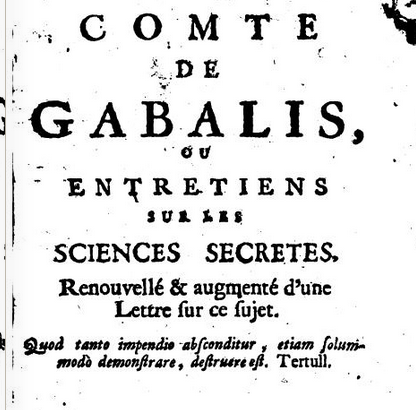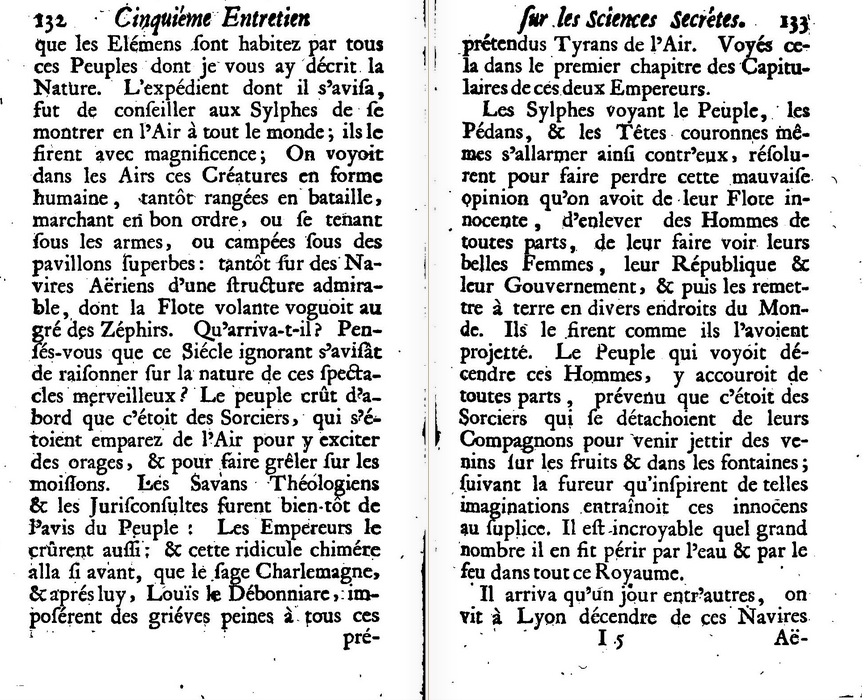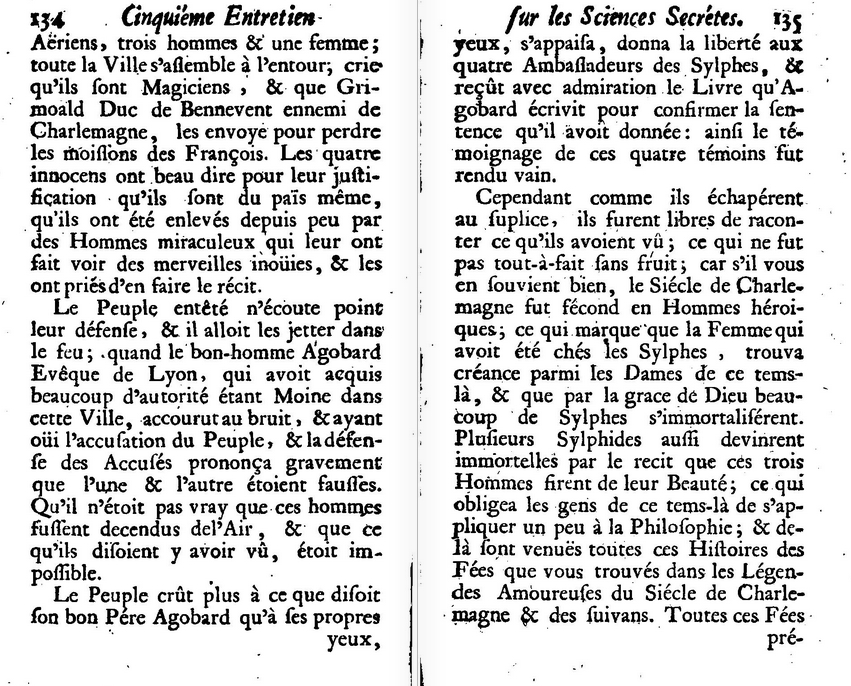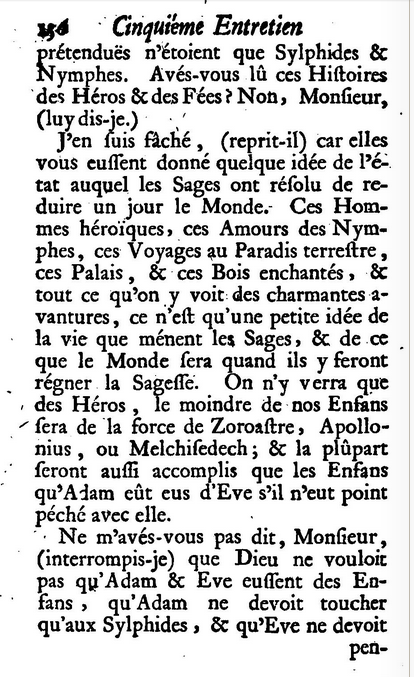Magonia #8: The Comte de Gabalis and the Sylphs June 18, 2013
Author: Beach Combing | in : Contemporary, Medieval, Modern , trackbackThe Magonia series is now almost at an end. But Beach could not sink the sky boats without a reference to the Comte de Gabalis, one of the most hellishly strange books ever written (first edition 1670). The CdG is a seventeenth-century esoteric text, essentially a long discussion of the secret life of elementals: the spirits of earth, wind, fire and water. The secret at the heart of the book, to save readers the task of ploughing through it, is that those of us who are wise should forsake our human contacts and marry a gnome or failing that a sylph, respectively the elementals of earth and air. And what does this have to do with cloud cuckoo land? Quite simply the author, possibly the Abbe Mountfaucon de Villars, included this monologue that might be called ‘the revolt of the sylphs’.
People would rather believe in a doctor’s hood than in their own eyes. There has been in your native France a memorable proof of this popular mania. The famous, Cabalist Zedechias, in the reign of your Pepin, took it into his head to convince the world that the Elements are inhabited by these Peoples whose nature I have just described to you. The expedient of which he bethought himself was to advise the Sylphs to show themselves in the Air to everybody; they did so sumptuously. These beings were seen in the Air in human form, sometimes in battle array marching in good order, halting under arms, or encamped beneath magnificent tents. Sometimes on wonderfully constructed aerial ships, whose flying squadrons roved at the will of the Zephyrs.
Admittedly the connection is so far fairly weak. But in a moment anyone who has been following the Magonian sources will start to have their bells not just rung but jerked up and down.
What happened? Do you suppose that ignorant age would so much as reason as to the nature of these marvellous spectacles? The people straightway believed that sorcerers had taken possession of the Air for the purpose of raising tempests and bringing hail upon their crops. The learned theologians and jurists were soon of the same opinion as the masses. The Emperors believed it as well; and this ridiculouschimera went so far that the wise Charlemagne, and after him Louis the Débonnaire, imposed grievous penalties upon all these supposed Tyrants of the Air. You may see an account of this in the first chapter of the Capitularies of these two Emperors.
This refers to a text, inter alia, against magic practices.
The Sylphs seeing the populace, the pedants and even the crowned heads thus alarmed against them, determined to dissipate the bad opinion people had of their innocent fleet by carrying off men from every locality and showing them their beautiful women, their Republic and their manner of government, and then setting them down again on earth in divers parts of the world. They carried out their plan. The people who saw these men as they were descending came running from every direction, convinced beforehand that they were sorcerers who had separated from their companions in order to come and scatter poisons on the fruit and in the springs.
Note here the confusion of Grimaldus’ chemical warfare with the actually unrelated sky ships. Note too that the author had read the works of Agobard a mere generation after their first publication. He is a pioneer.
Carried away by the frenzy with which such fancies inspired them, they hurried these innocents off to the torture. The great number of them who were put to death by fire and water throughout the kingdom is incredible. One day, among other instances, it chanced at Lyons that three men and a woman were seen descending from these aerial ships. The entire city gathered about them, crying out that they were magicians and were sent by Grimaldus, Duke of Beneventum, Charlemagne’s enemy, to destroy the French harvests.
Again this is based on a misreading of the Latin.
In vain the four innocents sought to vindicate themselves by saying that they were their own country-folk, and had been carried away a short time since by miraculous men who had shown them unheard-of marvels, and had desired them to give an account of what they had seen. The frenzied populace paid no heed to their defence, and were on the point of casting them into the fire when the worthy Agobard, Bishop of Lyons, who having been a monk in that city had acquired considerable authority there, came running at the noise, and having heard the accusations of the people and the defence of the accused, gravely pronounced that both one and the other were false. That it was not true that these men had fallen from the sky, and that what they said they had seen there was impossible. The people believed what their good father Agobard said rather than their own eyes, were pacified, set at liberty the four Ambassadors of the Sylphs, and received with wonder the book which Agobard wrote to confirm the judgment which he had pronounced. Thus the testimony of these four witnesses was rendered vain.
Beach doesn’t really understand the following passage: drbeachcombing AT yahoo DOT com
Nevertheless, as they escaped with their lives they were free to recount what they had seen, which was not altogether fruitless for, as you will recall, the age of Charlemagne was prolific of heroic men. This would indicate that the woman who had been in the home of the Sylphs found credence among the ladies of that period and that, by the grace of God, many Sylphs were immortalised. Many Sylphids also became immortal through the account of their beauty which these three men gave; which compelled the people of those times to apply themselves somewhat to Philosophy; and thence are derived all the stories of the fairies which you find in the love legends of the age of Charlemagne and of those which followed.
Interestingly spiritualist and theosophic ideas of fairies began with texts like the CdG.Also interestingly this text is at the centre of Jacque Vallée Passport to Magonia. And for ease of consultation:






